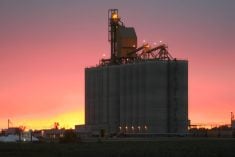There always has to be one party pooper, and after looking at a couple of recent news/information reports it looks like pretty good days right now for beef producers. While this boom is good, it probably means the next bust is coming.
Everyone was excited in late January that the South Korean market has reopened to Canadian beef. That is estimated to be worth about $30 million per year. And that is good news, although I took somewhat of a sideways view of this news in my Jan. 23 blog (go to: www.grainews.ca) when I wondered what took so long. (Interestingly, a few hours after that blog was posted I had an email from Terry Singeltary Sr. of Texas who took issue with the “safe food” comments. He feels the livestock industry is killing people with BSE and the human form Creutzfeldt Jakob disease, and it’s all part of a big cover up — so there we have another viewpoint. You can visit his webpage at http://transmissiblespongiformencephalopathy.blogspot.com or just Google his name.)
Read Also

Cancer agency reclassifies another herbicide ‘probably carcinogenic’
The WHO’s cancer research agency has now put atrazine, a herbicide well known to corn growers, in the same potential-hazard category where the agency put glyphosate.
But, hey on the open South Korean market front… we can’t look a gift steer in the mouth (unless we’re making sure it is under 30 months). And the other signal to me was Jerry Klassen’s market report (on Page 36), which paints a pretty rosy picture for the months ahead. He is estimating that Canadian live cattle shipments to the U.S. will soar from 12,000 head per month last November to about 60,000 head per month in early 2012.
I didn’t realize the Canadian feedlot system was that elastic. That’s a huge increase in live cattle shipments. I may just buy a pickup load of miniature Herefords to finish in the backyard here in Calgary so I can catch the edge of this wave. Damn the petunias, this is business, and I have to come up with a few bucks toward a wedding this year.
There is always something about the beef market that reminds me of that old line, “the good thing about banging your head against the wall is that it feels good when you stop.” So right now the beef industry isn’t banging its head, but give it a few months.
So that preamble leads to my sure-fire Canadian beef industry profit strategy called “supply management.” This little nugget has worked so well for the dairy and poultry guys, the cattle people should give it some thought. We have everything counted and numbered now. The folks at the Canadian Cattle Identification Agency now have this amazing database. I can see a pretty slick network of emails zooming across the country. “Fred at Stettler, Alta., we’re going to need another 25 head of Char-cross calves from you in 2012.” “Bob at Minnedosa, Man., hold off on bringing those 15 extra replacement heifers into the herd, because we’re giving Ernie at Cando, Sask. a chance to build his herd…” So everything is managed to prevent oversupply and everyone earns $200/cwt per steer.
I think it is a perfect solution, although some might argue, I may be in early stages of mad cow disease.
Lee Hart
((Editor’s Note: In an ongoing search for good ideas or tips to make calving, ranching or any other farming activity simpler or more productive, here are few useful tips with a dash of humour from an Alberta Peace River region rancher.)
Editor: You are looking for tips, and gave the example of Albert Woelk who feeds at night and gets up at 5 a.m. in March/April to check cows. Here is the tip for the guy who works off the farm; well, a couple of tips.
First, it is easier to put feed out once a week on Saturday or on days off, in small fields. Depending on how many cows you have, you can put out enough bales for a week, cut the twines, and let cattle into the field. For 60 cows, this can take an hour or two per week, as long as you don’t get stuck in the snow. This gives feed and bedding for most of the week, and near the end of the week, they will clean up the bedding. You can decide how much hay and how much straw depending on the year and quality and availability.
If there is a lot of snow, some feed will get covered, and cows will have to scrounge in the snow a bit, or you will move them a bit quicker, and they may clean it up in spring when the snow melts.
Never put two bales on the same spot in the same field, to help spread manure around. The grass in that field will grow from twice to four times as high and thick next summer. Try to have at least six different winter-feeding pastures. If you have several small fenced fields you can set out bales for several weeks, one field per week, or one field per four days. Then all that is needed is to open gates between fields when they finish the bales in one field. This means you don’t have to run a tractor in cold weather. You probably should keep power on your fences.
Second, checking cows for calving at night. Don’t. Leave them alone. If you have a good herd, checking cows at night for 60 days for calving might net you a grand total of $10/hr, and cause you all kinds of problems in your off-farm job — unless you have heifers. Then check them. Or make sure all your heifers look like cows.
One or two pastures for calving should probably be smaller than 40 acres for easier checking, but get them out of there as soon as possible. Try to move the entire calving herd once a week to keep the calving area clean, keep them out of wet areas, and give them lots of room and dry calving spots. And try to avoid helping them. Once you start helping a cow or two, then the rest figure they can take it easy and get your help too. Let them do their own work.
Third, make sure the cows always have good nutrition, especially sufficient selenium, and make sure they don’t have lice, and you will reduce calving problems greatly.
Fourth, make sure you have red or black cows, so that the mothers can find the calves in the snow.
Fifth, start calving in April instead of March.
Sixth, have fun!
John Zylstra
Fairview, AB















